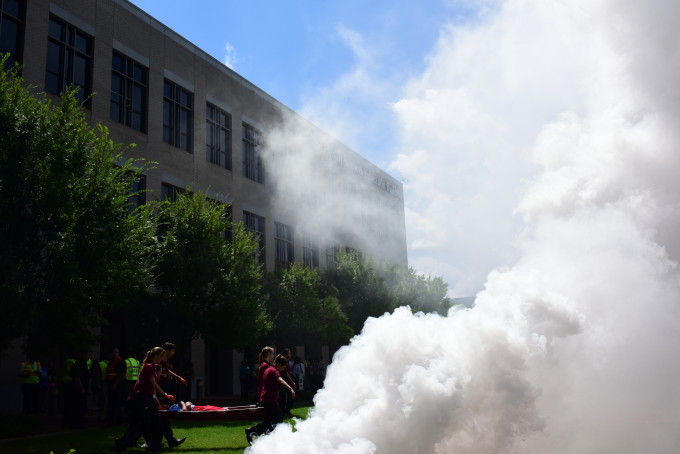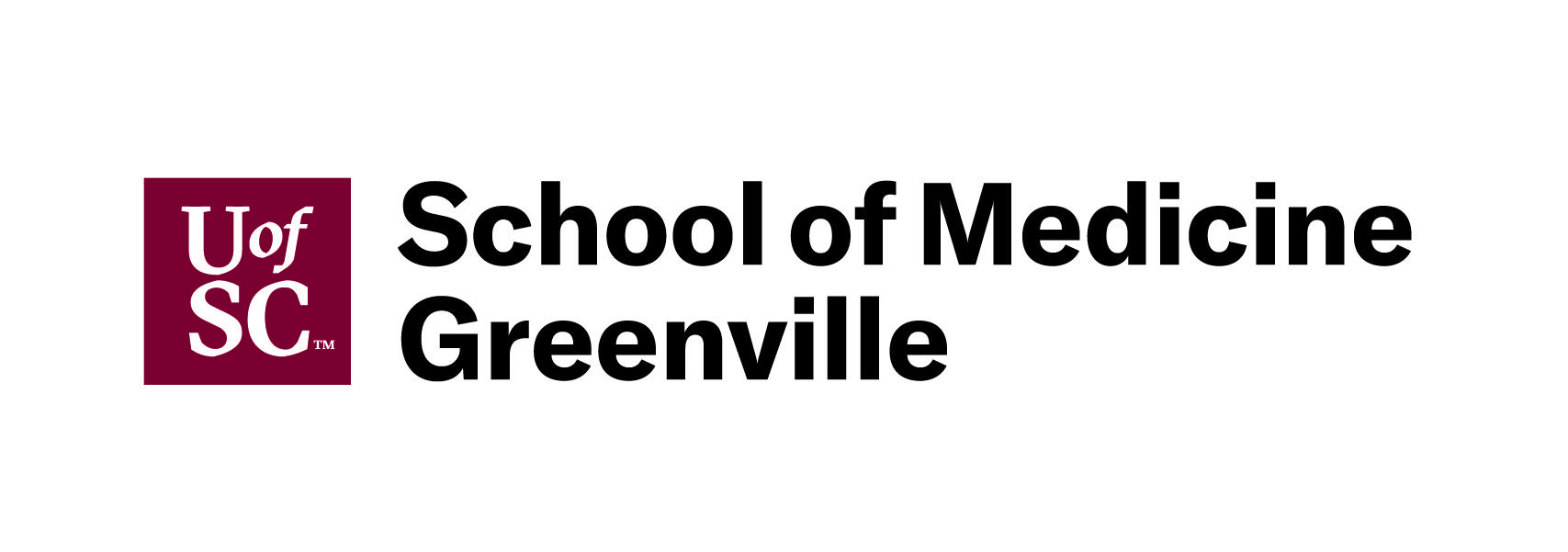
Get the latest articles delivered directly to your inbox!
Our Contributors
Class of 2022
Kyle Duke
Austin Foster
Charlotte Leblang
Ross Lordo
Class of 2021
Dory Askins
Connor Brunson
Keiko Cooley
Mason Jackson
Class of 2020
Megan Angermayer
Carrie Bailes
Leanne Brechtel
Hope Conrad
Alexis del Vecchio
Brantley Dick
Scott Farley
Irina Geiculescu
Alex Hartman
Zegilor Laney
Julia Moss
Josh Schammel
Raychel Simpson
Teodora Stoikov
Anna Tarasidis
Class of 2019
Michael Alexander
Caitlin Li
Ben Snyder
Class of 2018
Alyssa Adkins
Tee Griscom
Stephen Hudson
Eleasa Hulon
Hannah Kline
Andrew Lee
Noah Smith
Crystal Sosa
Jeremiah White
Jessica Williams
Class of 2017
Carly Atwood
Laura Cook
Ben DeMarco
Rachel Nelson
Megan Epperson
Rachel Heidt
Tori Seigler
Class of 2016
Shea Ray
Matt Eisenstat
Eric Fulmer
Geevan George
Maglin Halsey
Jennifer Reinovsky
Kyle Townsend
Join USCSOMG students on their journeys to becoming exceptional physician leaders.

Exceeding Limitations Through Cooperation
On Friday, September 11, the M1 students at the University of South Carolina School of Medicine Greenville participated in a training exercise as a capstone event for our EMT program at the start of our medical school curriculum. This event is unparalleled in the curriculum of other medical schools across the country and gave us a taste of the atmosphere surrounding the response to a mass casualty incident or catastrophic disaster. The faculty set up two different scenarios for us to complete. The first scenario involved a massive car pile-up with around 20 trapped victims. The other scenario was a staged mass shooting in the medical school involving around 170 patients. We were divided into teams of 25 or 26 in which we were broken down into squads of 4 or 5 to fulfill the different roles within the hierarchy of a mass casualty incident response: triage, extrication, treatment, and transport. The patients in the scenario wore make-up in the appearance of their injuries and acted according to a script written out for them. The two scenarios each required unique responses and were a test of the skills we learned over the course of seven weeks.
I have never participated in an event of such magnitude or intensity before. The exercise involved local law enforcement, fire, and EMS. The scene was filled with loud sirens, explosions, sounds of gunfire, and smoke. There were more than enough special effects to provide at least a taste of the environment at the scene of the represented disasters. Through the experience we learned many important lessons, more than can truly be enumerated in a space such as this. However, I would like to expound upon several of the lessons that we learned through the experience and through the debriefing process.
As a team, we quickly learned the importance of clear communication and leadership. In chaotic circumstances involving a vast number of moving parts, it is important for someone to step up and take definitive leadership, and it it is even more important for team members to communicate clearly. When my group participated in the motor vehicle pile-up exercise, it quickly became clear that someone needs to take charge of an area so that differing points of view do not create a delay in the treatment of a patient. Additionally, it is important to communicate with your teammates about what you are doing and what they could do so that you do not end up doing the same thing and consequently leaving a patient or task unattended. Our communication broke down in the treatment/transport area, and several patients with serious injuries “died” because they were not transported quickly enough. When communication and leadership break down, the outcome for a patient takes a turn for the worse. There is no doubt that this truth will play an important role in our practice as physicians as modern medical care begins to align more and more with a team-based methodology. We must never assume, but always use clear, concise communication to ensure that patients receive the best and most appropriate care possible.
Another important discovery was how poorly we performed in patient interactions. Over and over again, we failed to introduce ourselves, failed to comfort patients, and failed to inform them about what we were doing before we did it. Attempting to create rapport with the patients was undoubtedly a secondary thought in a chaotic, life-or-death environment, but it is something that is extremely important to the value of the care provided to the patients. We saw how a failure to connect to patients led to escalating emotions and greater difficulty in providing care. Additionally, during the debrief session after the first incident, we heard firsthand from a patient about the importance of explaining our actions in simple terms and communicating clearly and compassionately with patients throughout the duration of their transport and care. In a major event with many injured people, it is easy to be overcome by adrenaline and training leading to a failure to remember the fact that you are caring for a person not just a set of injuries. In our practice of medicine, if we fail to come to patients in compassion, understanding, and humanism, we fail to provide the high-quality care that we aspire to provide. If we are to provide the best health care possible, we must pay attention to a patient’s affect, emotions, spirituality, and mind. Paying attention to these details completely transforms the patient experience.
One of the most difficult things for me personally throughout the exercise was my inability to do much in the moment to change the situation or improve the condition of the patients. My current level of knowledge and skill simply did not allow me to provide definitive care or to quickly improve a patient’s condition. In many ways I was powerless over the gravity and enormity of the entire scenario. I stood by and watched as my classmates extricated the patients as I was assigned to the treatment/transport area. I knew I needed to be prepared to do my job, but it was difficult to stand there and wait while the patients were screaming in agony and fear [part of the simulation]. One of my greatest struggles is remaining at peace when circumstances are outside of my control, and this exercise directly challenged that struggle. I left the event satisfied that I had done my best but also wishing that I could have done more.
Ultimately, there were more lessons to be learned through this event than I could possibly grasp. Medical education in the basic sciences is often described as trying to drink through a fire hose, but this experience demonstrated that though I have much to learn about science, I have just as much to learn about wisdom, empathy, interdisciplinary cooperation, and other intangible skills that shape professional identity and color the quality of care I will provide. If I remember anything from this exercise, I hope I remember the importance of every level of care and the importance of every person involved in the health care delivery system. I came face to face with my limitations in the chaotic environment created for this exercise, and it was only through unified teamwork that we were able to “save” the lives of some of our patients. Taking the humble perspective of recognizing our limitations and turning to others who may have more expertise or experience will ultimately yield the best outcomes for our patients, even in circumstances that carry seemingly insurmountable odds. No part of the system is unimportant, and no one individual in the system is better than the whole team. We will do well to learn our limitations, grow in humility, and to simply do our best. We must allow our failures and inadequacies to shape our resilience, determination, and humility if we are to become the type of physicians who can transform the delivery of healthcare.
I was born and raised in Cincinnati, Ohio. After graduating high school, I attended Liberty University in Virginia for my undergraduate studies and graduated in December of 2014 with a degree in cell and molecular biology. At Liberty, I participated in student leadership as a Resident Assistant and Spiritual Life Director. I met my wife through student leadership, and we got married in January 2015. I have wanted to be a doctor since very early in life, and I am very grateful to have the opportunity to study and learn at the USC School of Medicine Greenville. It is my desire to one day use medicine in missions work and to provide care to the underserved. I am excited to share perspectives and stories throughout my education on the blog.
Transforming Medical School Blog
Copyright 2021 USC School of Medicine Greenville


